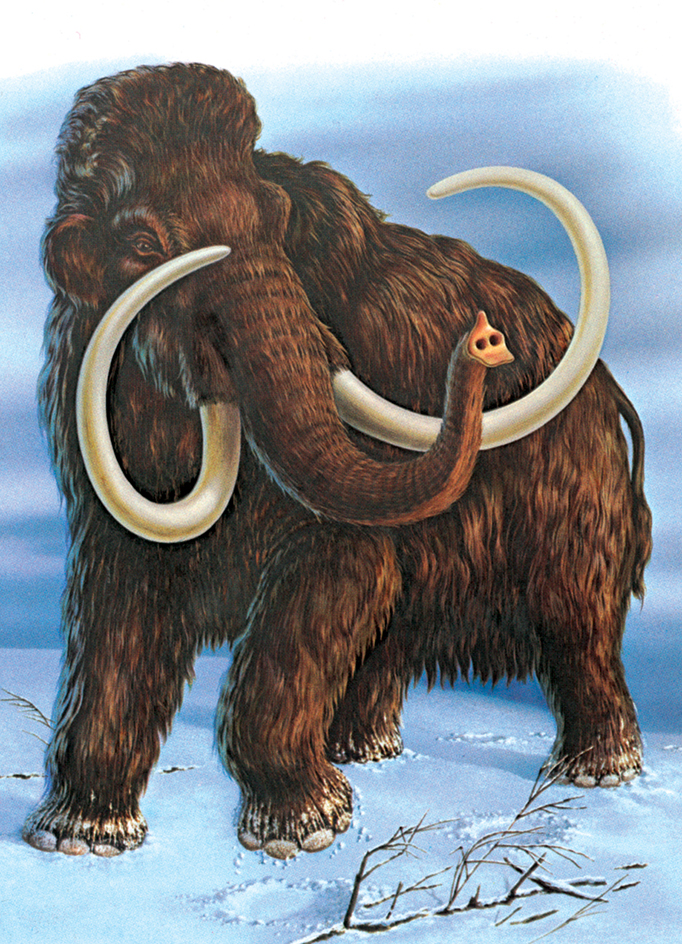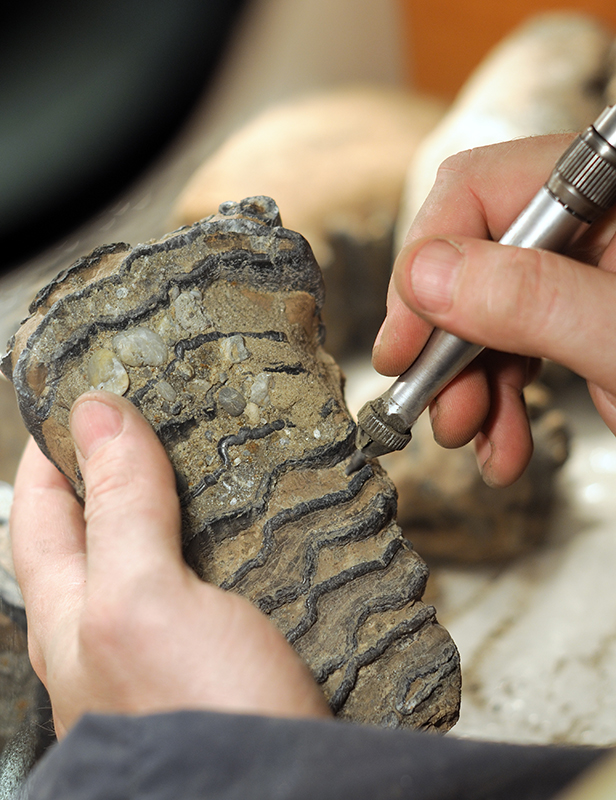Mammoth, << MAM uhth, >> was a prehistoric animal closely related to present-day elephants. Mammoths were huge, lumbering beasts. Some measured more than 14 feet (4.3 meters) high at the shoulders. Mammoths had trunks and tusks. Many had tusks 13 feet (4 meters) long. The tusks curved down from the animal’s upper jaw, then curved up and sometimes crossed in front of the trunk. Certain mammoths, called woolly or hairy mammoths, had long hair on their bodies. This hair helped protect them from the severe cold of the Pleistocene Epoch, a time marked by a series of ice ages.

Mammoths rank among the most common fossils. The bodies of mammoths have been found perfectly preserved in ice in Siberia. Fossils of mammoths also have been found in Africa, Europe, and North America. Alaskan miners often find well-preserved mammoth bones and teeth when they pan for gold.

The oldest known mammoth bones date from 4 million years ago in Africa. Mammoths spread to other continents and reached North America about 11/2 million years ago, during the Pleistocene Epoch, which ended about 11,500 years ago. Prehistoric people hunted them for food. Pictures of mammoths drawn by cave dwellers can be seen on cave walls in France (see Cave paintings and drawings). Most mammoths died out about 10,500 years ago. However, groups of smaller mammoths called dwarf mammoths survived much longer on isolated islands. One group, which lived on Wrangel Island off the northeast coast of present-day Siberia, died out only about 3,800 years ago. These dwarf mammoths reached only about 6 feet (1.8 meters) high at the shoulder.
